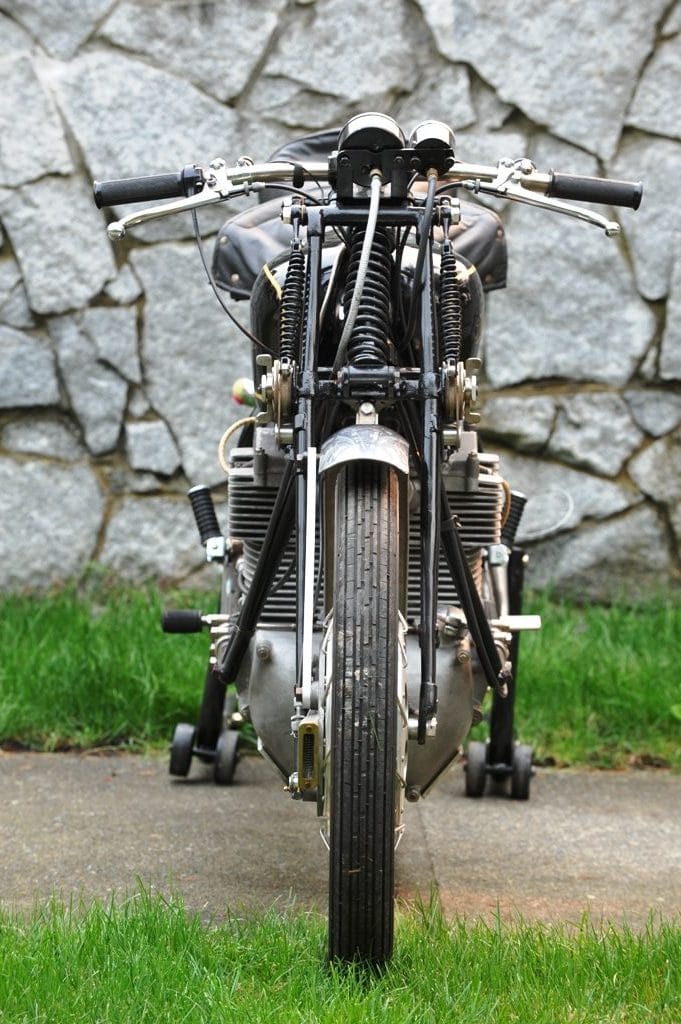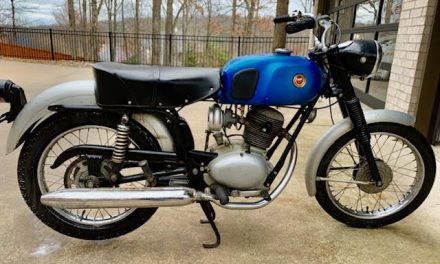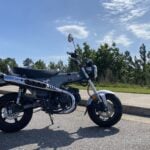We Shed Some Light On A Little-Known Pre-War Racer
We love motorcycles. All of them. But we must admit to a soft spot for vintage, those legendary bikes of yesteryear. With that in mind, we plan to occasionally showcase a piece of classic iron that we find particularly compelling. This one comes courtesy of Mecum Auctions, via our friend Bill Braile of POIM (Pics of Interesting Motorcycles). We hope you enjoy this little slice of motorcycle history. Heck, we might have to dedicate a new page to these!
This astounding supercharged Grand Prix racer is the ultimate homage to the work of Velocette designer Charles Udall. The Roarer is a legendary machine built on the eve of World War II, when the tiny, family-owned Velocette took up the gauntlet thrown down by German and Italian factories, who supercharged their sophisticated twin and 4-cylinder racers, making the fastest motorcycles in the world. While Zenith, Brough Superior and OEC battled with BMW and Gilera for the Land Speed Record on the straightaways, these British companies didn’t build Grand Prix racers. It was left to Velocette and AJS to design special supercharged road racers to challenge the technical superiority of the BMW RS255 Kompressor and Gilera’s Rondine DOHC four. AJS built a water-cooled version of its V-4 and added a blower, while Charles Udall at Veloce Ltd. designed a completely new motorcycle with twin contra-rotating crankshafts in a parallel-twin format, the supercharger and gearbox integral to the layout. It was, in effect, a British version of BMW’s all-conquering flat twin, but with the cylinders upright and the BMW’s defects corrected.
The opposite rotations of the crankshafts, gearbox and shaft final drive canceled out the dreaded torque reaction of the BMW design that made handling quirky and prevented BMW from ever winning a World Championship without a sidecar. It took a very brave rider—like Georg Meier or Walter Zeller—to tame the BMW and exploit its 30 MPH speed advantage over the Velocette and Norton single-cylinder racers.
Stanley Woods publicly tested the Roarer at the 1939 Isle of Man TT even though both he and the factory knew the bike was not quite ready to race. They also knew that war was imminent, and the British team wanted to send a message to its European rivals: we don’t need fascist government funding to build the most technically advanced motorcycles in the world. The Roarer was blasted around the track only once, as a two-finger salute, then put away while Woods got busy with the bikes he would actually ride, the factory Velocette single-cylinder racers on which he won the Junior TT (beating the supercharged DKWs) and took fourth in the Senior TT. Meier won the Senior TT on his BMW Kompressor, but that was only the opening salvo of the much larger conflict to come.
Dan Smith, a superfan of 1930s design and an exceptionally gifted engineer, could hardly resist this stirring example of British ingenuity and decided to build an homage to the Roarer. The Velocette Roarer still exists, although it too had required extensive replication, as the internals of the motor were long gone. Ivan and Graham Rhodes, who normally fabricate Rolls-Royce jet engine parts, drew up blueprints for new internals and were able to supply Smith with them as an aid to building his own Roarer. Smith still had to cast up his own crankcases, cylinders, heads, supercharger case, gearbox and final drive cases, and then build the parts to fill them. He also had to build a replica of the Roarer’s peculiar frame, featuring Velocette’s pioneering swingarm rear suspension and hydraulically damped girder front forks, as well as the wheel hubs and brakes. Very few individuals on earth have built a complete, functioning motorcycle totally from scratch, let alone a supercharged, twin-crankshaft Grand Prix legend. Smith has tested his creation several times at the racetrack, albeit briefly, as it’s very fast.
This remarkable recreation by Dan Smith of the 1939 Velocette Roarer is one of the most amazing technical feats by a craftsman/engineer in the field of motorcycles. It’s a virtuoso work of mechanical art, built with the passion of a man in love with the most important motorcycle designs of the 1930s.
We want to thank Mecum Auctions for sharing this story and photos with us, and Bill Braile for putting us on to the story of this bike.
*photos and article by Mecum Auctions.
Rob



































0 Comments